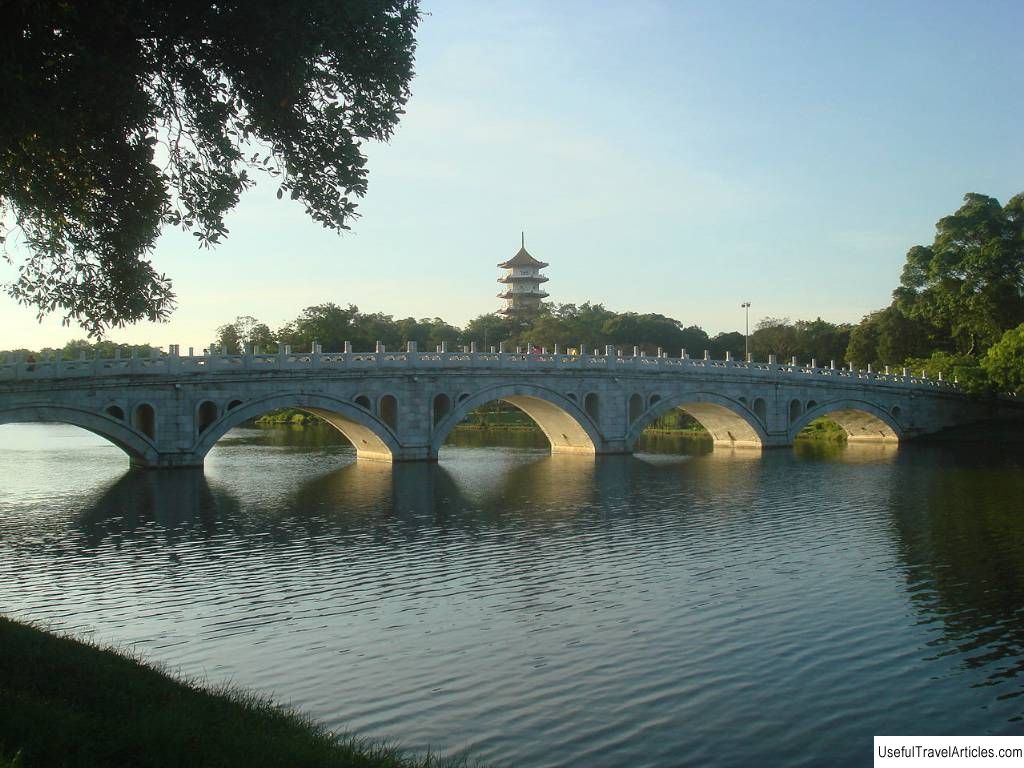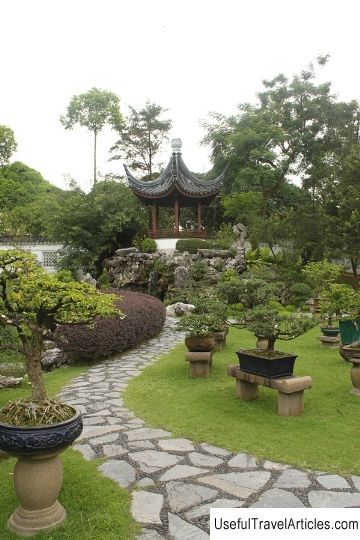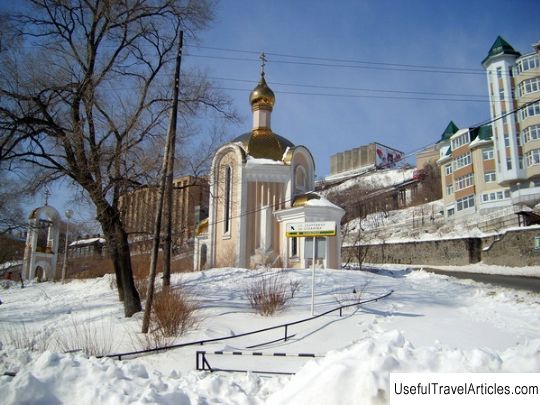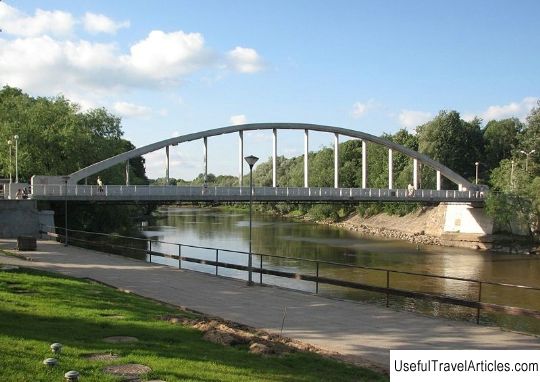Japanese and Chinese Garden (Japanese Garden) description and photos - Singapore: Singapore

Japanese and Chinese Gardens description and photos - Singapore: Singapore. Detailed information about the attraction. Description, photographs and a map showing the nearest significant objects. The title in English is Japanese Garden. Photo and descriptionJapanese and Chinese gardens are the embodiment of the government's policy for nature conservation and landscaping. They are located in the western part of Singapore on two islets of Lake Jurong. These two different parks with picturesque vegetation and original architecture are connected by an arched bridge as a symbol of the combination of Chinese and Japanese concepts. The bridge is remarkable not only for its length of 65 meters, but also for its graceful beauty. It is believed that the prototype of this 13-arched structure was the bridge of the Beijing Summer Palace, no less elegant. The Chinese garden was laid out in 1975 by the project of an architect from Taiwan, Professor Yun Chen Yu.On an area of over 13 hectares there are stone bridges, small ponds with fish, a seven-story pagoda, gazebos and pavilions in a typical Chinese style, house. All of this is harmoniously blended into the plant landscape, demonstrating the Chinese park art of connecting architecture with nature. The Chinese garden consists of several parts. The most popular is the Bonsai Garden, opened in 1992. Two thousand seedlings were brought for him from China. There is also a training center where you can learn the art of caring for bonsai. The Garden of Abundance is interesting, where among the pomegranate trees you can see sculptured figures of the Chinese zodiac signs and other animals symbolizing health, abundance, longevity, etc. The Japanese garden is decorated in a restrained and laconic manner. It is decorated with stones brought from the land of the rising sun. An atmosphere of tranquility reigns here, it is especially emphasized by the skyscrapers of the metropolis towering away from this oasis of greenery and peace. The gardens are eagerly visited not only by tourists; they are a favorite resting place for local residents. They play sports, have picnics, or just lie on the rugs. Since the territory of the gardens is quite large, lovers of active recreation feel great here and there are many secluded corners for lovers of quiet relaxation. The Turtle Museum is worth visiting - the only paid institution in the gardens. There is a pond with little turtles in a beautiful garden near the museum. And in the museum you can see huge turtles. The Turtle Museum is well worth a visit, the only paid establishment in the gardens. There is a pond with little turtles in a beautiful garden near the museum. And in the museum you can see huge turtles. The Turtle Museum is well worth a visit, the only paid establishment in the gardens. There is a pond with little turtles in a beautiful garden near the museum. And in the museum you can see huge turtles.     We also recommend reading Disneyland (Disneyland) description and photos - France: Disneyland Topic: Japanese and Chinese Garden (Japanese Garden) description and photos - Singapore: Singapore. |




